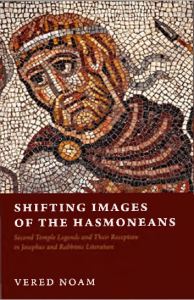 Of special interest to many readers are questions over the authenticity of passages about Jesus and John the Baptist in Josephus’s Antiquities.
Of special interest to many readers are questions over the authenticity of passages about Jesus and John the Baptist in Josephus’s Antiquities.
We know the tell-tales signs that a passage has been inserted into Josephus’s Antiquities:
- It breaks the narrative flow of the surrounding passage;
- It contradicts what is known about information from other sources or even elsewhere in Josephus’s work;
- It can be out-of-place chronologically;
- It appears to assume certain details are found elsewhere in Antiquities but that are not found anywhere else;
- It introduces details in which Josephus appears to have no interest in the rest of his work.
But what if Josephus himself was responsible for those interpolations? A study by Vered Noam sets out evidence for thinking that Josephus was responsible for a series of additions to an otherwise completed narrative history. We know that textual “corruptions” were very common throughout antiquity (for some details see Forgery in the ancient world) so the question that we need to ask as we read Antiquities is: Is this interpolation by Josephus or some subsequent copyist?
To illustrate a case for an interpolation by Josephus into his own work I copy a table from Vered Noam’s Shifting Images (p. 69). Close to twenty years after completing the Jewish War (75-79 CE) Josephus modified and expanded that earlier narrative by adding — interpolating — new material in Antiquities (93/94 CE). (I have added the older passage location references — e.g. III. 7 — that many of us relying on Whiston translation know better than the Loeb Classical Library numbering.) Continue reading “Interpolations in Josephus’s Antiquities of the Jews“
